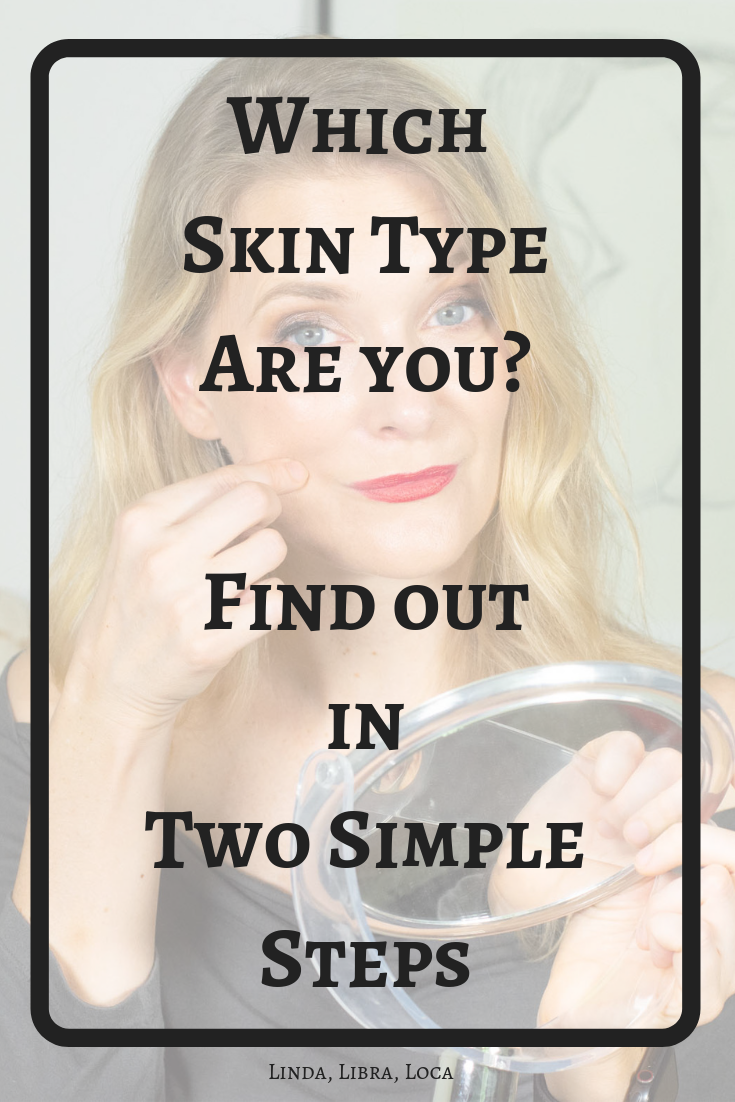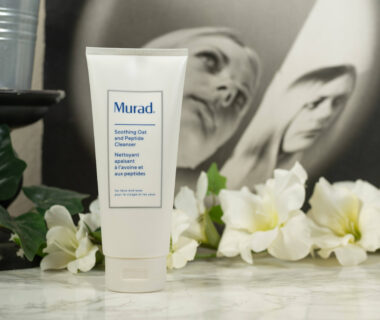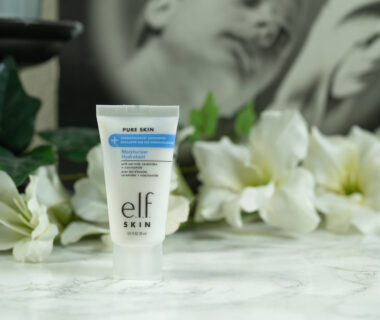Sometimes it is the simple things we struggle with the most, and if we get them wrong, nothing that comes afterwards even has the chance to get right. That is true in so many parts of our lives, and translates into skin care as well. Or into skin types, to stay on topic.
Figuring out your skin type is crucial to learn which products (or better: ingredients!) you will need to make your skin become the best version of itself. And it should be fairly easy, don´t you think?

Wrong. Defining our skin types sounds easy, but the majority of people misdiagnose themselves and, because of that, treat their skin the wrong way.
Usually my advice for important things that can be tricky to figure out would be: Go see a professional. But in this case, that won´t work.
What does “skin type” actually mean?
You see, “skin types” is NOT a medical term. It isn´t referenced in dermatology books, isn´t part of our lectures, it simply “isn´t a thing”. At least not in the way we use it in cosmetics. Your doctor will talk about skin type not referring to your oil glands, but to your susceptibility to sun damage, grading your skin type on the Fitzpatrick scale. Very important, but not helpful in picking a moisturizer.
The way we use the term “skin types” in cosmetics is actually a marketing thing, aiming to help sell you product lines for your skin type. But that doesn´t mean it isn´t helpful. Quite on the contrary, it is extremely helpful and the basis for a skin care routine that works.
As you probably have heard already, there are five types of skin: Normal, Dry, Oily, Combination and Sensitive. Some might want to add Mature and Dehydrated to that list, but for me that are skin conditions rather than skin types.
They are determined by your genes but – and that is what makes it tricky to figure out – are heavily influenced by external factors like climate, diet, stress levels and of course products you are using. You could have a normal skin type, but if you keep covering it in a very rich cream it will feel oily and react with breakouts, behaving as if you had oily skin.
The fact that what things like “oily” mean isn´t clearly defined adds to the confusion. Is your skin already oily if you need to blot your t-zone in the middle of the day? Or does it need to turn into greaseball within two hours to qualify?
Now I don´t claim to have answers to all of that, but today I want to show you how to determine your skin type quick and easy at home. And for extra convenience, I filmed it.
How to determine your skin type – Step 1
Wash your face with a mild cleanser (nothing stripping!) and wait for at least 3 hours without applying any additional products. It is important to use a gentle cleanser without any actives, so no exfoliating cleansers or ones that foam with the help of Sodium Laureth Sulfate. And yes, no products means no sunscreen – probably the only time you will hear me tell you that!
After waiting for a minimum of three hours, you take either blotting paper or just separate some tissue into thin small pieces and stick them to your face, one piece for:
- Forehead
- Nose
- Chin
- Left cheek
- Right cheek
- Left jaw
- Right jaw
You will look like an idiot, but get your first clue:
In the areas where the paper doesn´t stick, your face is dry. If it sticks, but has only little oil, your skin is normal, and if it is drenched in oil, your skin is oily – stating the obvious here!
I admit when I did this step myself for the video, I was in for a surprise. Turns out that my skin isn´t as oily as I thought – heavy duty retinol usage has left me with a few drier spots on my jaw and nose.
How to determine your skin type – Part 2
Now grab a mirror and look at your skin.
Look for your pores
Where are they and how big are they?
Big pores show that your skin is producing much sebum that dilates them, so your skin is oily. If your pores are small and fine, your skin is normal, and if you really don´t see any at all, your skin is dry.
Pinch your skin
Gently of course, I don´t want you to bruise yourself, just take two fingers and push your skin together. How does it look?
If is is still plump and bouncy, your skin is normal or oily. If you see tiny crepey lines or even flakes of skin lifting off, your skin is dry.
Get a feeling for your untreated skin
Your skin tells you what it needs.
If you listen and don´t throw too many things at it before it has a chance to tell you. So how do you feel after three hours of bare skin?
Perfectly fine? Great, your skin is normal.
Tight and itchy? Your skin is dry.
As if you could fry an egg on your forehead? Your skin is oily.
But what about sensitive skin? I keep talking about dry, normal and oily, but aren´t there five skin types?
There are indeed. Combination skin simply means that parts of your skin are oily or dry while the rest in fairly normal, so you´ll see signs of both on your face. And sensitive skin can´t really be determined by looking at your skin or doing the tissue test – you´ll see it after three hours without any products. If the lack of protective layer already led to redness, bumps and itching, your skin is sensitive.
Now that we found out which skin type we have, let´s talk about each one of them and their specific needs shortly:
Normal skin
Your sebaceous glands produce just the right amount of oil to keep your skin smooth and dewy, but not shiny and blemish prone. And while your skin can be off balance due to food, hormonal changes or using the wrong products, it quickly gets back to normal once that is sorted. You rarely have blemishes, large pores or other issues.
Your main concern should be prevention as in antioxidant products, sun protection and hydration.
(Related reading: Which ingredients work for anti aging)
Dry skin
Your sebaceous glands produce the least oil out of all skin types. This oil has benefits though, it keeps moisture inside the skin and protects from external aggressors. If you have too little, that means your skin is more prone to dehydration and irritation making your skin itchy.
On top of that skin is prone to micro tears due to reduced elasticity, resulting in flakiness, and often appears dull. On the upside you don´t really have a problem with large pores (unless your skin is very dehydrated).
What your skin needs is hydration, but also emollients and occlusive to keep the hydration inside and to improve elasticity. Also make sure that you use very gentle cleansers and avoid anything that will strip your skin further like frequent washing and hot showers.
(Related Reading: Do you really need a moisturizer? The difference between dry and dehydrated skin)
Oily skin
You have very active sebaceous glands that overproduce sebum.
That is a good thing for keeping moisture in and protecting against irritation, but the overproduction makes your pores appear larger and is a great breeding ground for bacteria, so you are more prone to breakouts.
Your main concern is balancing your sebum production and preventing dirt and bacteria getting trapped inside your pores. Gel or foaming cleansers (non-stripping!) work well for that, as does Zinc, Niacinamide and of course Salicylic Acid.
(Related reading: 5 hacks for oily skin (that are not skincare))
Combination skin
It is basically a mixture between dry parts and oily parts with normal skin. It can be more combination dry or combination oily, and basically gets the problems of both worlds…
Multimasking was invented for your skin type!
(Related reading: My favorite face masks – for the moment)
Sensitive skin
All skin types can get sensitized! But sensitive skin reacts quicker and easier to anything put on top, be it ingredients or temperature changes, wind or even sun. People with sensitive skin are usually prone to other sensitivities as well, be it hay fever, food intolerances or similar.
It is important that you are as minimalistic with your routine as possible, as gentle as possible and that you avoid common triggers.
Preservatives are not your foe here, but essential oils for example are, so don´t buy into the misconception that so called “natural” cosmetics is better for you. Plant extracts can be much more irritating than man made ingredients, but that is a topic for a whole other video.
(Related reading: Damaged skin barrier – cause of acne, irritation and atopic dermatitis? )
Your turn: What is your skin type? And did you know all along?



